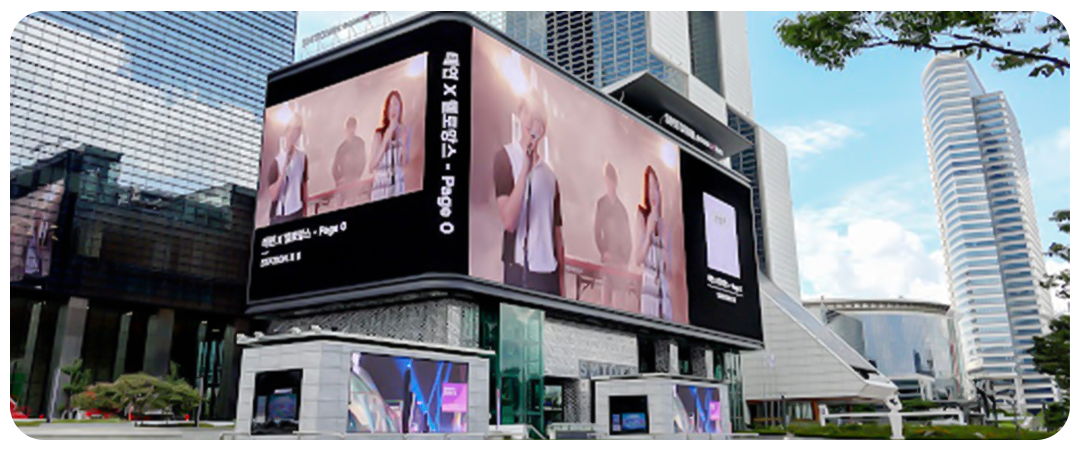
South Korea, particularly Seoul, is a bustling hub of commerce, technology, and culture. For brands aiming to connect with decision-makers and high-net-worth individuals, OOH advertising South Korea offers unparalleled visibility and impact. The key lies in strategic placement, leveraging both traditional and cutting-edge digital formats. While outdoor advertising is widespread, focusing on specific zones maximizes reach among our target demographic. Let's explore the top ten locations where your message can truly resonate.
1. Gangnam Station Vicinity: Undeniably one of Seoul's most vibrant districts, Gangnam Station is a confluence of business, entertainment, and high-end retail. The sheer volume of foot traffic, estimated in the hundreds of thousands daily (pre-pandemic data often cited figures over 1 million daily entries/exits for the station itself), includes a significant mix of young professionals, business executives, and affluent shoppers. Large-format digital screens and high-impact static billboards dominate the landscape. This area presents a prime opportunity for Digital OOH South Korea campaigns, allowing for dynamic content delivery. The advertising environment is dense, so differentiation through compelling visuals and clear messaging is key. Programmatic DOOH here can target specific demographics during peak business commute times.
2. Gwanghwamun & Jongno District: This area is the historical and governmental heart of Seoul, housing major corporations, financial institutions, and government offices. It's frequented daily by a high concentration of business leaders and decision-makers. OOH options include premium digital screens, bus shelters, and classic billboards. The audience profile here is mature and professional, making it ideal for B2B messaging or luxury brands. Industry reports suggest high dwell times at key intersections, offering valuable exposure. Consider placements near major office buildings and along key transit routes serving the district.
3. Yeouido Financial District: Known as South Korea's "Wall Street," Yeouido is home to the Korea Exchange (KRX), major banks, investment firms, and broadcasting stations. This island district is a nucleus for the financial elite and business professionals. Transit advertising South Korea, particularly within Yeouido and Yeouinaru subway stations, captures this audience during their commute. High-impact digital displays and building wraps offer significant visibility. The focused business environment means less clutter from purely consumer-focused ads compared to shopping districts, potentially offering higher message salience for relevant brands.
4. Teheran-ro (Gangnam): Stretching through Gangnam, Teheran-ro is Seoul's "Silicon Valley," lined with major IT companies, tech startups, and multinational corporations. The audience comprises tech professionals, entrepreneurs, and business executives. Billboard advertising Seoul along this major thoroughfare offers high visibility to vehicular traffic. Digital screens and strategically placed bus shelter ads also perform well. Programmatic DOOH can leverage data points relevant to the tech and business sectors active in this zone.
5. COEX InterContinental Area (Samseong-dong): Home to the COEX Convention & Exhibition Center, Starfield COEX Mall, and luxury hotels, this area attracts a significant number of international business travelers, conference attendees, and affluent shoppers. The iconic digital spectaculars here are among the most sought-after digital outdoor advertising placements in Asia. The high concentration of global visitors makes it perfect for international brands and financial services targeting investors. Advertising density is extremely high, demanding premium creative.
6. Myeongdong Shopping District: While primarily a retail and tourism hub, Myeongdong attracts a vast number of domestic and international visitors, including affluent shoppers. The sheer foot traffic (often cited as one of the highest in Seoul) provides massive reach. Large digital billboards and storefront media dominate. While the audience is broader, luxury goods, financial services, and travel brands can effectively capture high-income individuals here, especially using dynamic Digital OOH South Korea formats.
7. Seoul Station Transit Hub: As a central hub for KTX high-speed trains, subway lines, and buses, Seoul Station sees enormous daily passenger flow, including a substantial number of business commuters and travelers from across the country. Subway advertising, including platform screen door ads and large digital displays within the station complex, offers sustained exposure. This is a key node for reaching professionals traveling between Seoul and other major Korean cities.
8. Key Subway Lines & Transfer Hubs (e.g., Express Bus Terminal Station): Beyond individual stations, advertising across key subway lines (like Line 2, Line 9) or at major transfer points like the Express Bus Terminal station captures a massive, diverse audience daily. Transit advertising South Korea options range from in-car panels and posters to digital screens on platforms. The repetitive nature of commuting ensures high frequency. Programmatic options on digital transit screens allow for targeting based on time-of-day or specific station demographics. Researching subway advertising cost versus reach is crucial here.
9. Major Arterial Roads (e.g., Gangnam-daero, Olympic-daero): Key highways and major roads carrying significant vehicular traffic offer opportunities for large-format Outdoor advertising South Korea, primarily through billboards. These routes are essential for reaching commuters, including business professionals traveling by car or bus (버스 광고). Visibility is high, especially during peak traffic hours, though messaging needs to be concise and impactful for quick reads.
10. Busan - Seomyeon or Haeundae: Looking beyond Seoul, Busan is South Korea's second-largest city and a major port and business center. Seomyeon is Busan's commercial and transit hub, while Haeundae is known for its beaches, conventions (BEXCO), and upscale residences. Targeting these areas allows brands to reach affluent residents and business travelers in the southern region. OOH options include subway advertising, bus advertising, and digital billboards, providing a valuable extension to a national campaign.
Strategic Considerations:
While OOH advertising cost South Korea varies significantly by location and format, focusing on these prime zones ensures your investment targets the desired high-value demographic effectively. Explore Programmatic DOOH South Korea options for enhanced targeting and flexibility, especially in digitally advanced locations like Gangnam and COEX.
By carefully selecting locations that align with the movement patterns and environments of business leaders, investors, and affluent travelers, your OOH campaigns can achieve significant impact and cut through the noise in South Korea's vibrant media landscape.


